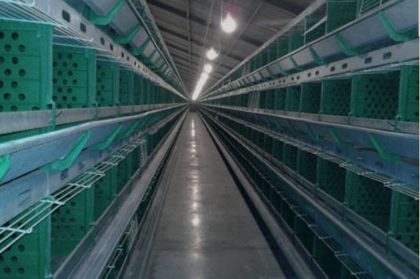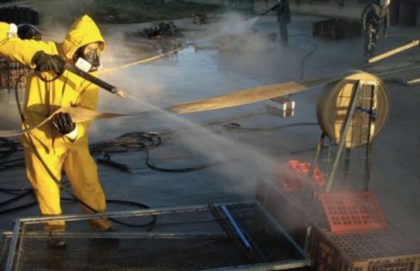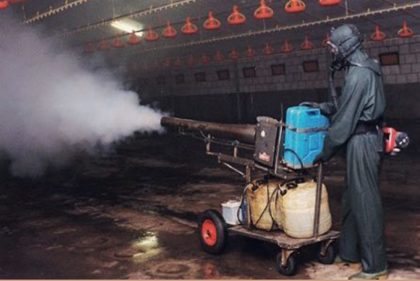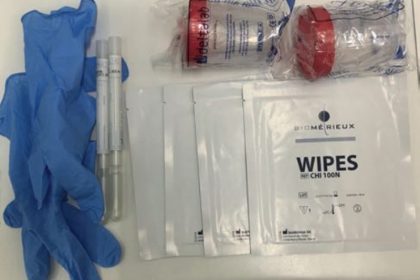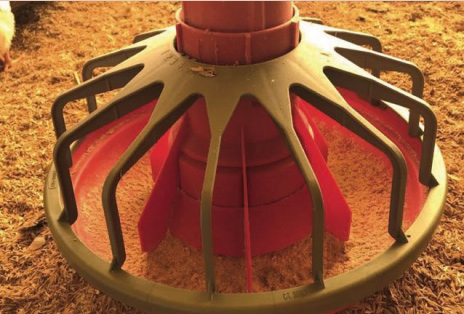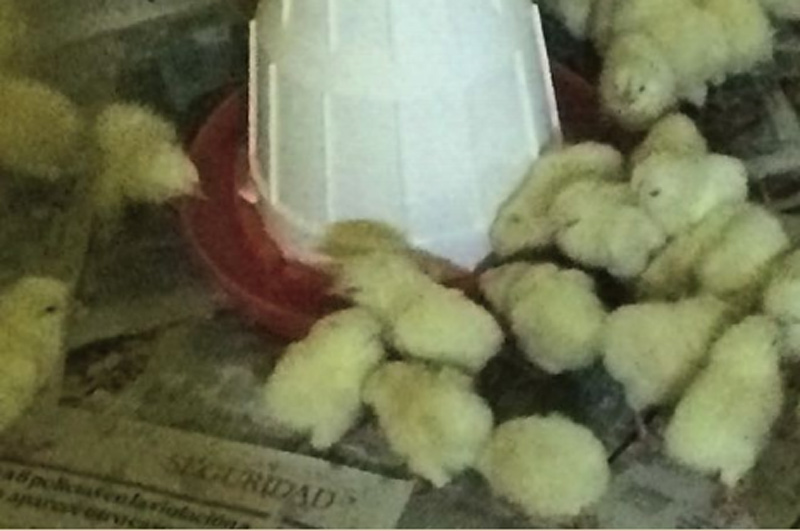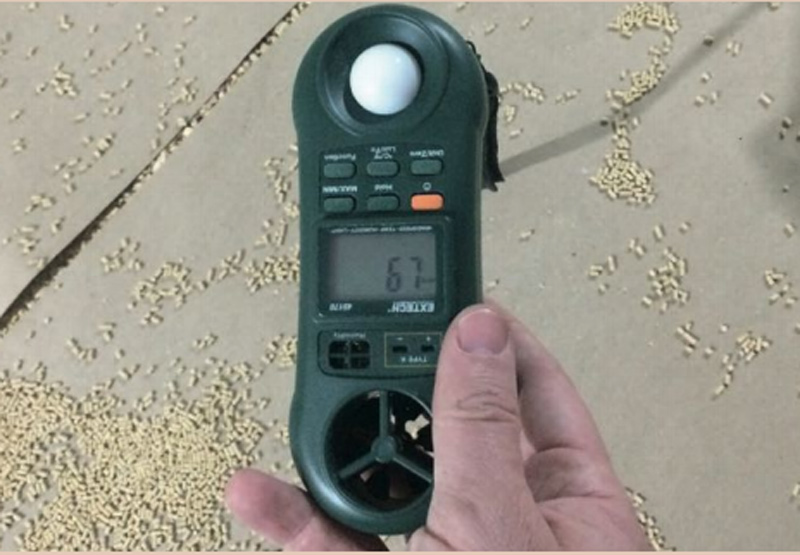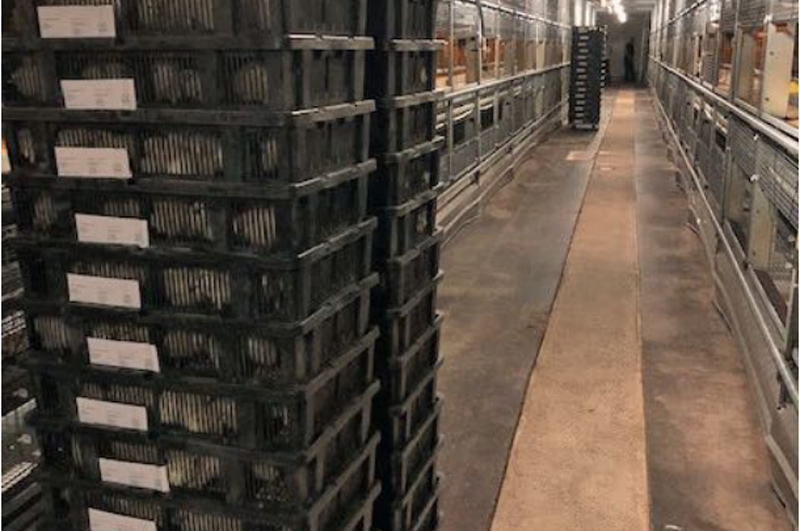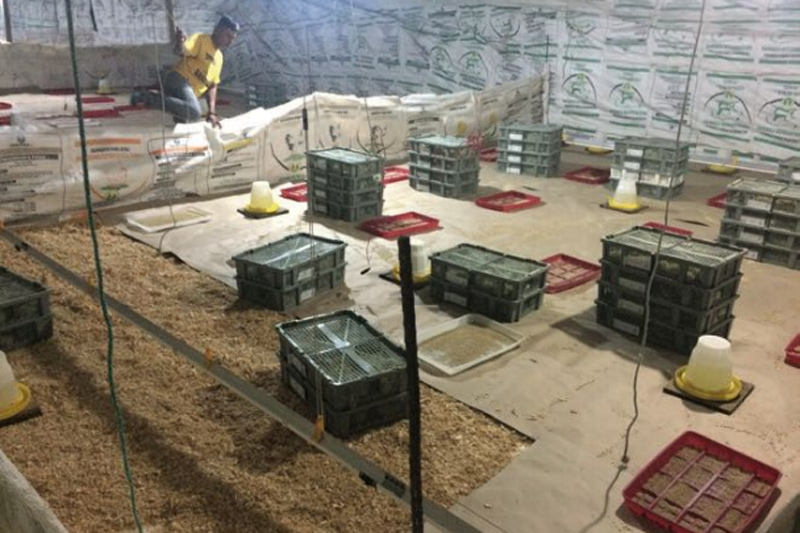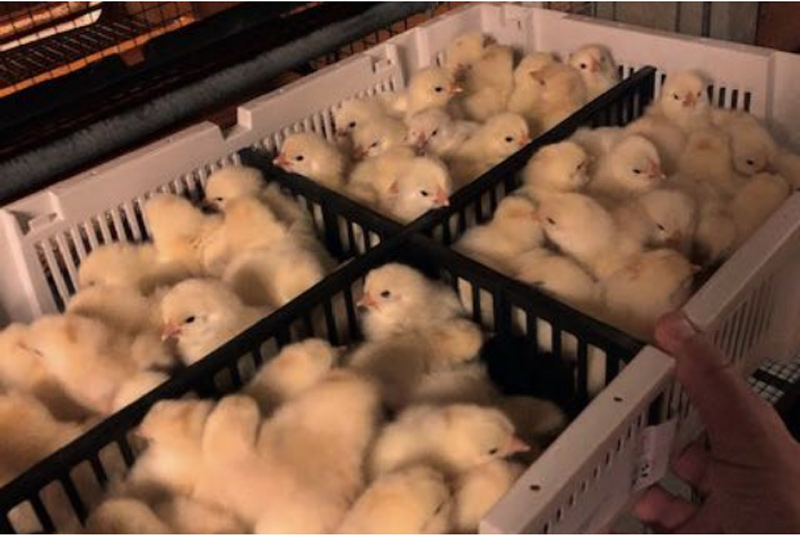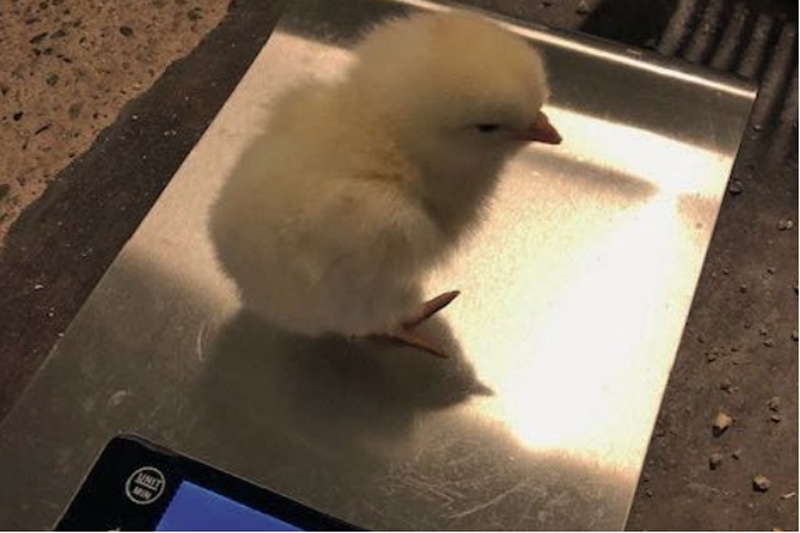Cleaning and disinfection procedure
Step 1
Preparation
It is essential to remove all equipment or waste (dead birds, feed, eggs, manure, etc.) left in the house before cleaning. Any removable material/equipment should be detached
Step 2
Dry cleaning
This removes all dust and dry organic material from the house using compressed air, brooms or shovels.
Step 3
Wet cleaning
This removes all remaining organic material and grease. Thoroughly clean using detergent and hot water. Apply foam detergent and leave it to work for the specified time.
Step 4
Disinfection
This kills all remaining pathogens that survived the previous
steps. For good performance:
- Use only reliable and effective disinfectants
- Apply the appropriate dose
- Respect contact time and temperature
- Take extra care to clean litter area in floor/aviary systems to prevent coccidiosis/worms.
- In new litter, apply a product to kill mold.
Step 5
Fumigation
- Fumigate after liquid disinfection has been completed
and the equipment has been
installed again. - Follow the label instructions.
- Use appropiate PPE (personal
protective equipment).
Step 6
Sampling
Sample after cleaning and disinfection, check if the microbiological results are ok. Corresponding sampling and laboratory analysis should be performed: at least eight samples per house should be taken, distributed randomly as shown in table 1. If results are unacceptable, take corrective measures.
Cleaning and disinfection procedures are key to preventing pathogens from passing from one flock to the next. They also prevent pathogens from challenging birds in their early life. The goal of this procedure is to minimize all microorganisms in the house to offer chicks the best opportunity to perform well.
Clean and disinfection microbiological results:

IMPORTANT
1. Do not proceed to the next step until the previous step has been completed.
2. Clean the area outside the house, storage and service areas, water lines and ventilation system.
3. Provide staff with adequate protection and clothing: masks, gloves, etc.
4. Maintain the cleaning equipment regularly.
Stocking density
An adequate stocking density is a condition for success in rearing chicks. A high stocking density impacts negatively on daily growth, flock uniformity and chick development.
Furthermore, a high stocking density combined with reduced feeder space will limit feed consumption, which might already be low under certain conditions (e.g. hot climate or poor feed quality,) and sufficient access to water.
Stocking density in rearing farms

1 Floor space: include all living space: litter area and extra levels (slats or tiers).
2 Spaces can be different in each country due to regulations from government, animal welfare organizations and retailers.
3 All these values are the minimal recommendation. Provide more space in hot climate areas.
4 Pan feeders: 2 cm/bird 0–3 weeks and 4 cm/bird 3–16 weeks (diameter = 3.14 x circumference).
Floor rearing house preparation
There are mainly two types of floor brooding: whole house brooding or spot brooding. The one best for your system will depend on the equipment: heaters, drinkers and feeders.
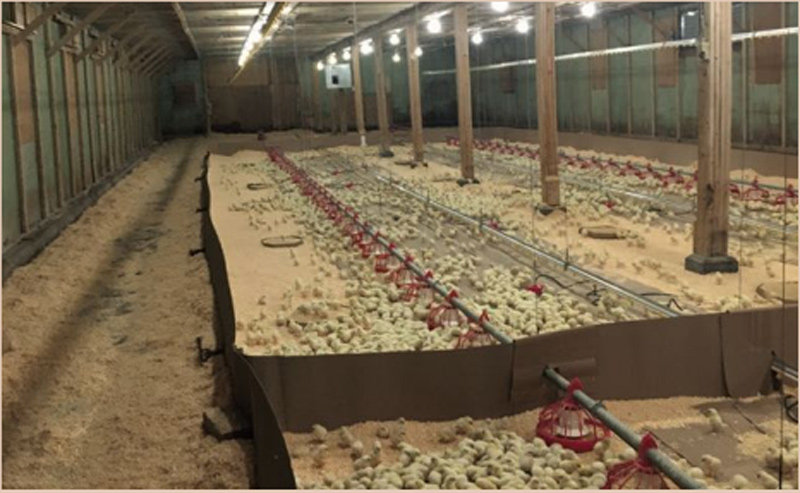
Whole house brooding
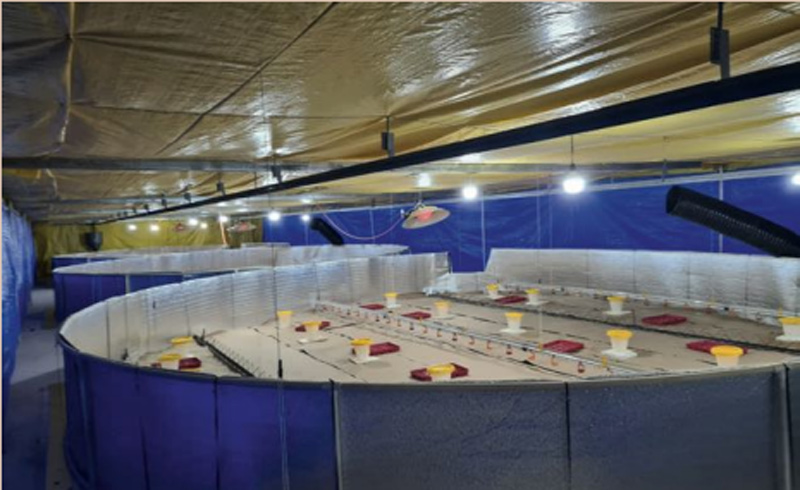
Spot brooding
Feeding system
Supplemental feeder trays should be provided within the brooder ring for a few days (7 to 10) days), until all chicks are eating from the regular feeding system. Ensure adequate feeder space is provided. Cover at least 50 % of the brooding area with paper and scatter feed over the paper. Use extra feeders (paper trays) in a ratio of 80 to 100 chicks per extra feeder.
Drinking system
Chicks must have unlimited access to clean, good quality, fresh water (20–25 °C). During the first days, cups or nipples should be checked and triggered several times per day to stimulate the chicks to drink. Supply additional drinkers which can be easily accessed until the chicks are drinking from the regular water system. Use extra bell drinkers at a ratio of 100/extra drinker (4 liters capacity).
Ventilation
Guarantee enough fresh air, but no drafts. In conventional pancake brooders, use chick guards (i.e. new cardboard) to prevent drafts. Start with a diameter of approx. 2 m in cool weather and approx. 4 m in hot weather. Enlarge the ring every couple of days and remove by six or seven days of age.
Light intensity
Provide both, optimal light intensity (40 to 60 lux) and uniform distribution (no shady areas). More details in the lighting chapter.
Distribute litter and paper
Only use new and clean litter. Insoluble grit should be fed if the chicks are on a type of litter (e.g. shavings) that will be eaten by the chicks. Keep litter level low to prevent bad air quality (Ammonia) in later period of rearing.
 Example of a correct set-up for placement
Example of a correct set-up for placementCage rearing preparation (cage rearing systems)
Distribution
Birds are housed at a higher stocking density during the first weeks. To ensure uniform pullet growth, it is important that the birds are moved into the empty cages at the appropriate time and with the correct cage density.
Paper
Cage wires should be covered with paper during the first week of life. Avoid covering the area directly under the drinking system, but cover the surrounding area. When drinkers have a drip cup, you can put paper underneath them (see image). Keep the paper until 18 to 21 days of age. If Coccidia vaccine was applied, ask your veterinarian or H&N technical team for advice
Drinking system
 360°-Nipples (low pressure)
360°-Nipples (low pressure)360-activated nipples in the brooding cages are preferred. If unavailable, provide cup drinkers during the first week (30 to 40 chicks per drinker) Reduce the water pressure on the nipples to make triggering the nipples easier and attract the chicks by the drop formation. Take extra care when infrared beak treatment was applied at the hatchery!
Feeding system
Abundant feed should be provided in the feeders and additionally on the papers inside the cages before the chicks are housed to stimulate feed intake.
Light intensity
 Feed on paper & optimal light intensity
Feed on paper & optimal light intensityProvide both, optimal light intensity (40 to 60 lux) and uniform distribution (no shady areas). More details in the lighting chapter.
Pre-heating the rearing house
Temperature recommendation
Soil/Concrete: 28 °C Litter: 30 °C Air: 34 °C
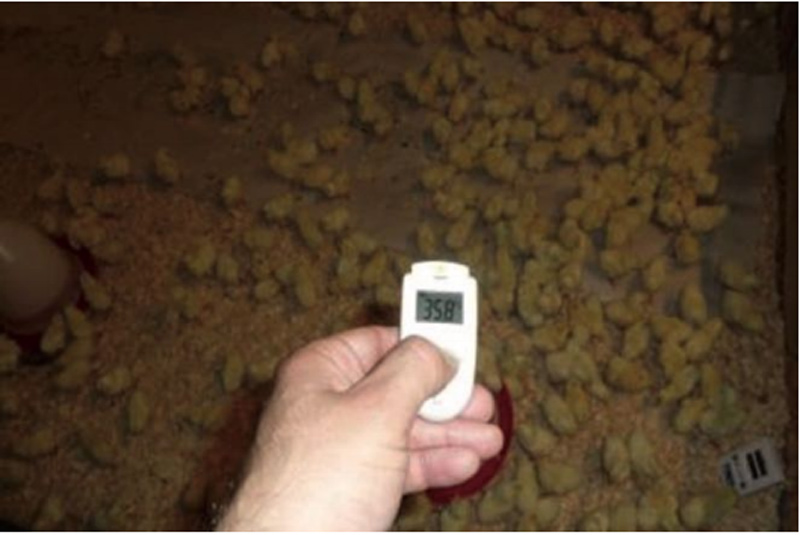
Air34 – 36 °C / 93.2 – 96.8 °F
Pre-heat the house before the chicks arrive: 24 hours in warm weather and 48 hours in cold weather.
Humidity recommendation
60 to 70 %

Floor/Concrete
≥ 28 °C / ≥ 82.4 °F
Do not only heat the air, but also litter, soil and equipment. Chicks gain and lose temperature easily through conduction.
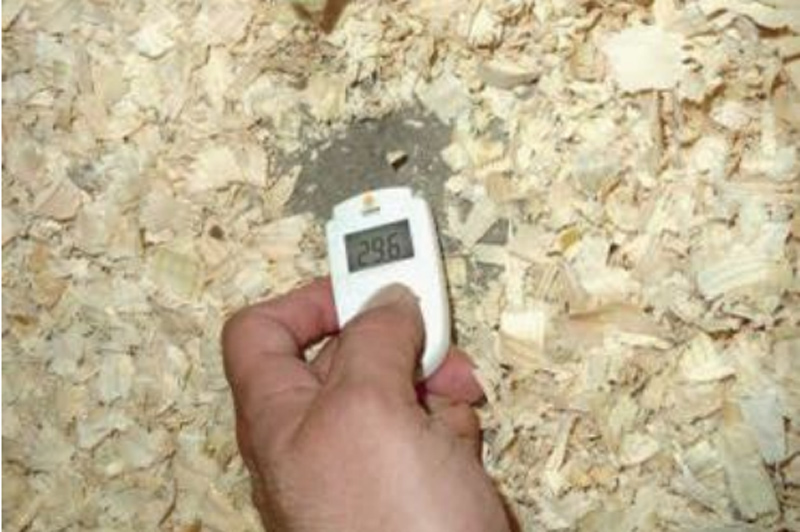
Litter
≥ 32 °C / ≥ 89.6 °F
When you don’t preheat the house to an optimal level you could experiment chick mortality and bad development impacting on immune and digestive systems.
CHECK LIST BEFORE CHICKS ARRIVE
1. Ensure a uniform temperature inside the house. Check the temperature in different areas (use an infrared
thermometer). Check that temperature and humidity sensors are working properly.
2. Check the time clock settings and light dimmer settings.
3. Check automatic water and feed systems for correct settings and uniform distribution.
4. Flush water lines before arrival.
5. Trigger nipples and cups to ensure proper working condition and to stimulate the chicks to drink.
6. Coordinate time of arrival with the hatchery and confirm the number and condition of the delivered chicks.

Arrival of the chicks
Airport
Chicks arrive to the destination airport after a long journey. Thus, the sooner they are liberated for the border authorities, the better will arrive to the farm. Keep in mind that a copy of all the chick’s documentation is always sent in the back of the white box included in the delivery In the meantime, Chick crates / pallets never should be stored in conditions that are too
hot or cold, windy, under the rain or in direct sunlight. If crates are clearly damage or if you observe dead birds when the flock is delivered to you, an official claim should be completed before departing from the airport. You will find the official form in the back of the white box. H&N logistic team can support you in that case.
 White Chick Box: Cargo Damage
White Chick Box: Cargo Damage Transport to the farm
To transport the flock in environment controlled truck should avoid unnecessary risk during the journey. In any case, place stacks giving them space between chick crates for
air flow. Truck must be clean and disinfected correctly before of this service. Keep monitoring temperature (24 to 26 °C) , relative humidity and chick’s behavior.
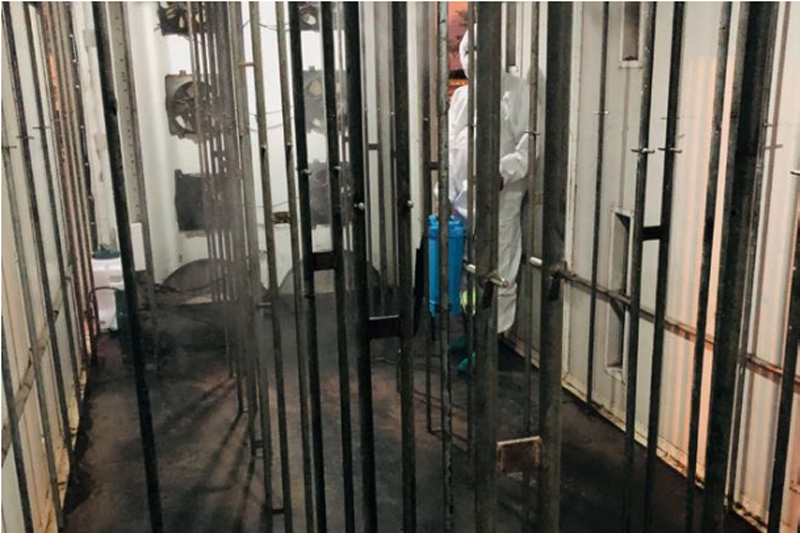 Truck must be cleaned and disinfected
Truck must be cleaned and disinfected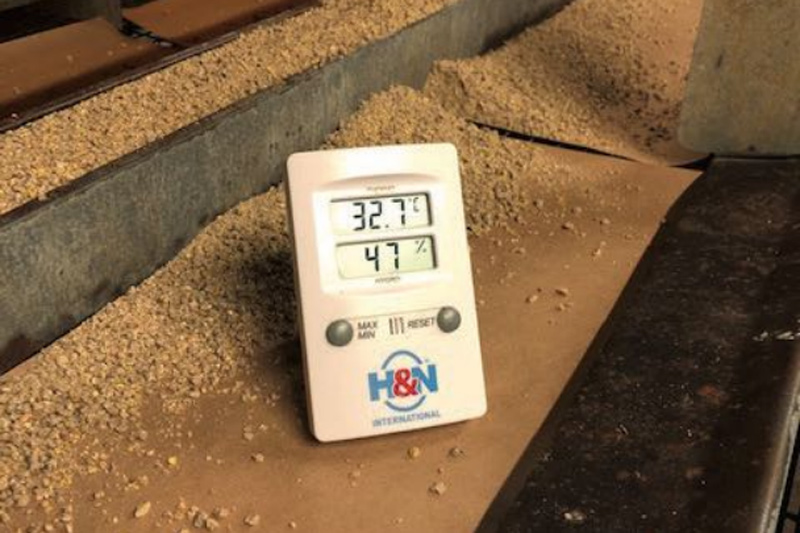 Bevor arrival: Check the conditions upon arrival
Bevor arrival: Check the conditions upon arrivalUnloading the chicks
Observe chick’s behavior right after placement
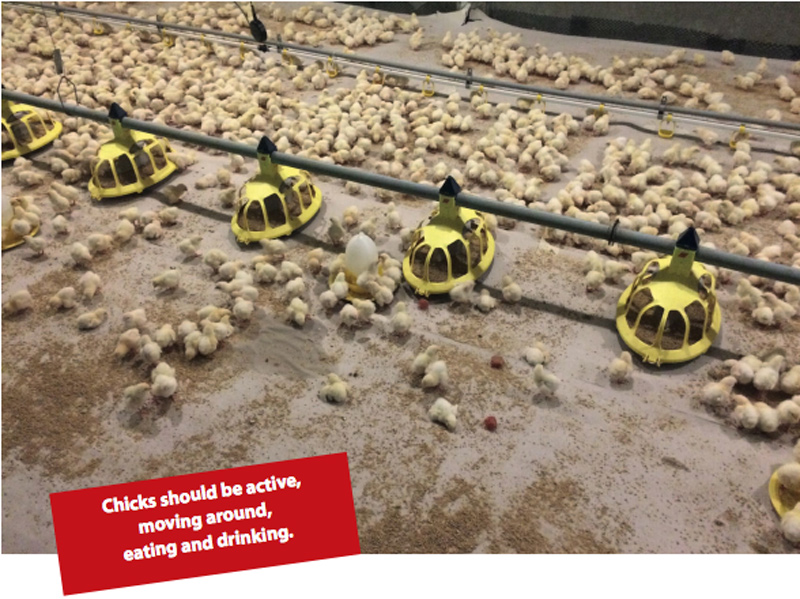
KEY POINTS
- A good and clear communication with H&N logistic team is a key component. They will answer and solve any doubts.
- Ensure the house has been cleaned and disinfected correctly before chicks arrive.
- Preheat the house to the correct temperature: Always test at chick level brooding period.
- Observe stocking density recommendations and adapt drinking and feeding systems to the brooding period.
- House the chicks quickly so they can access water and feed.
- Take the time to inspect the chicks for body temperature and quality.

